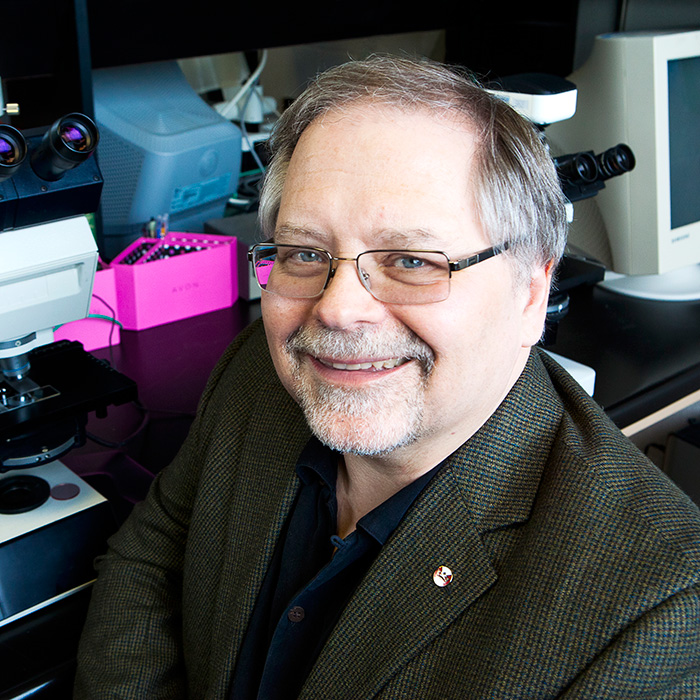Using lake sediment samples to unravel the causes and effects of natural and human activities on environmental change: this research will lead to an improved understanding of human impacts on aquatic ecosystems, and better methods of understanding the effects of global warming.

Tier 1
Understanding Our Role in a Changing Environment
Media reports of extreme weather and water quality advisories are appearing more frequently. But how much of a role does human activity play in environmental change? Are people responsible for global warming, or is it just part of a natural process? The science of paleolimnology may be the best way to answer these questions.
Paleolimnology uses the physical, chemical, and biological information stored in lake sediments to track environmental and ecological change. Sediment cores provide a record of change over years, centuries, and beyond, offering unique insights into the history of climatic and ecological change.
Dr. John Smol, Canada Research Chair in Environmental Change, leads an international program in the field of paleolimnology with four basic goals: to track long-term trends in climatic change and environmental pollution; to enhance research in the Arctic to track climatic and other environmental change; to develop new approaches to studying water-quality problems; and to develop new approaches to assessing pressing problems such as declining fish stocks.
The work done by Smol and his research team is allowing scientists to offer advice on improving lake management strategies. Comparative national studies could tell us whether those guidelines can be applied to lakes across the country, or if they must be customized to each region or lake.
This work is also enabling researchers to better understand and determine the role that human industrial activities play in climate change, and its effects on our ecosystems.